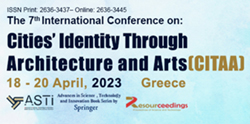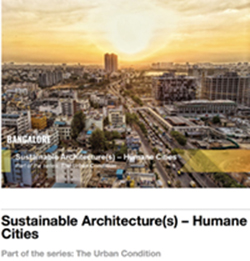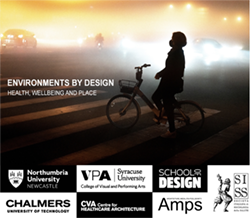ISSN (print): 1076-0431
ISSN (online): 1943-5568
Dec
2021
In recent years, various national funding agencies and professional societies have called for an evolution in how students and practitioners are educated, trained, and re-trained. This push has been motivated by several factors, including workforce changes, environmental concerns, and an increasing need for automation. This special collection aims to compile high quality papers that explore topics related to this educational evolution within the Architectural Engineering (AE) domain. More specifically, this will include studies that explore new Architectural Engineering topic matters that will become critical in the foreseeable future, and new educational methods that leverage emerging tools and technologies to better prepare students and practitioners for success in Architectural Engineering. This collection of papers will serve as a resource for educators and practitioners interested in understanding emerging trends and opportunities related to the learning content and strategies that will effectively prepare the Architectural Engineering workforce of the future. While the editors of JAE are interested in a wide range of topics related to the future of AE education, several sub-topics related to specific emerging technologies and teaching strategies are of particular interest, including (but not limited to): Assessment strategies for evaluating the impact of new technologies on learning; Studies of how new technologies and topics impact engagement and retention within AE; Technologies that provide learning environments that cannot be easily replicated in traditional classrooms (for example: virtual, augmented, or mixed reality in AE); Technologies that augment or enhance students’ abilities to learn AE topics (for example: artificial intelligence and machine learning); Methods for educating students on how to engineer building components for robotic or other novel construction methods; Improving students’ abilities to engineer more resilient buildings in response to changing environmental and regulatory conditions; Documenting trends in educational research related to AE; Strategies for enabling lifelong AE education and training.
United States Of AmericaThe Future of Education in Architectural Engineering
In recent years, various national funding agencies and professional societies have called for an evolution in how students and practitioners are educated, trained, and re-trained. This push has been motivated by several factors, including workforce changes, environmental concerns, and an increasing need for automation. This special collection aims to compile high quality papers that explore topics related to this educational evolution within the Architectural Engineering (AE) domain. More specifically, this will include studies that explore new Architectural Engineering topic matters that will become critical in the foreseeable future, and new educational methods that leverage emerging tools and technologies to better prepare students and practitioners for success in Architectural Engineering. This collection of papers will serve as a resource for educators and practitioners interested in understanding emerging trends and opportunities related to the learning content and strategies that will effectively prepare the Architectural Engineering workforce of the future. While the editors of JAE are interested in a wide range of topics related to the future of AE education, several sub-topics related to specific emerging technologies and teaching strategies are of particular interest, including (but not limited to): Assessment strategies for evaluating the impact of new technologies on learning; Studies of how new technologies and topics impact engagement and retention within AE; Technologies that provide learning environments that cannot be easily replicated in traditional classrooms (for example: virtual, augmented, or mixed reality in AE); Technologies that augment or enhance students’ abilities to learn AE topics (for example: artificial intelligence and machine learning); Methods for educating students on how to engineer building components for robotic or other novel construction methods; Improving students’ abilities to engineer more resilient buildings in response to changing environmental and regulatory conditions; Documenting trends in educational research related to AE; Strategies for enabling lifelong AE education and training.
Ei Compendex, Emerging Sources Citation Index, ProQuest databases, Civil Engineering Database, Inspec, Scopus, EBSCO databases.
There is no fee of any kind charged for publishing.
Guest Editor
Steven Ayer









